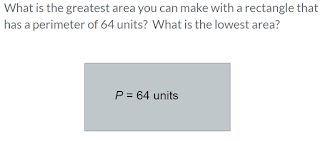As our Math Rocks program comes to an end I have been ask to reflect on my experiences this year and what I have learned. I really feel like I have become a better math teacher through this experience and interestingly enough I don't feel like I really learned a new program. Instead I feel like how I think about teaching math has transformed, which can be a hard thing to do.
I feel like my relationship with math has changed because I really have started to think about teaching math in a different way. Math Rocks has taught me different ways to spark curiosity with my students. Before Math Rocks I felt like I was engaging my students, but after letting them explore math instead of just learning it I have seen the level of engagement increase and concepts are better understood.
Math Rocks has also helped me spark curiosity with better beginnings to my class. We learned about Estimation 180, Which One Doesn't Belong, and Math Talks. This year I really have made a point of starting each class with one of these "warm ups," and I have stuck with it! My students really love these activities, and I have seen a great improvement in their number sense and reasonableness.
Math Rocks has really helped me grow as a math teacher; however this has just sparked my curiosity too. I hope to continue this math journey!
Wednesday, February 3, 2016
Wednesday, January 13, 2016
Area & Perimeter Open Middle Problem
For my first try at an Open Middle Problem, I posed the following question:
At first, the students groaned and said that it was too hard, and they didn't get it. I told them to calm down and think about what the problem was asking. Once they drew it out, they started to figure it out. Here is what they came up with. I have a small class and they all came up with the same answer and agreed they used the same strategy.
I really love that they tried a solution and then checked to see if there were any other solutions that were greater. This gave them more practice solving area in just one problem. As you can see they had a picture of a square and a rectangle. They decided that the area of the square was bigger (256 sq. units). So, I drew both on the board with their areas and asked how could that be the answer if that is a square and not a rectangle. We got into a great geometry debate arguing if squares are rectangles. We decided that squares are rectangles!
At first, the students groaned and said that it was too hard, and they didn't get it. I told them to calm down and think about what the problem was asking. Once they drew it out, they started to figure it out. Here is what they came up with. I have a small class and they all came up with the same answer and agreed they used the same strategy.
I really love that they tried a solution and then checked to see if there were any other solutions that were greater. This gave them more practice solving area in just one problem. As you can see they had a picture of a square and a rectangle. They decided that the area of the square was bigger (256 sq. units). So, I drew both on the board with their areas and asked how could that be the answer if that is a square and not a rectangle. We got into a great geometry debate arguing if squares are rectangles. We decided that squares are rectangles!
For the smallest area they came up with 31 sq. units.
What was even better was that after we did this problem, one of my students made a generalization that in order to find the smallest area for any rectangle, they would have to make two of the sides equal to 1. She also decided that in order to find the greatest area they could just make a square. I wish we would have had more time to test out her theory on some other problems (hopefully we will tomorrow). I love how this problem really made them think and check if their solution was correct.
Subscribe to:
Posts (Atom)



